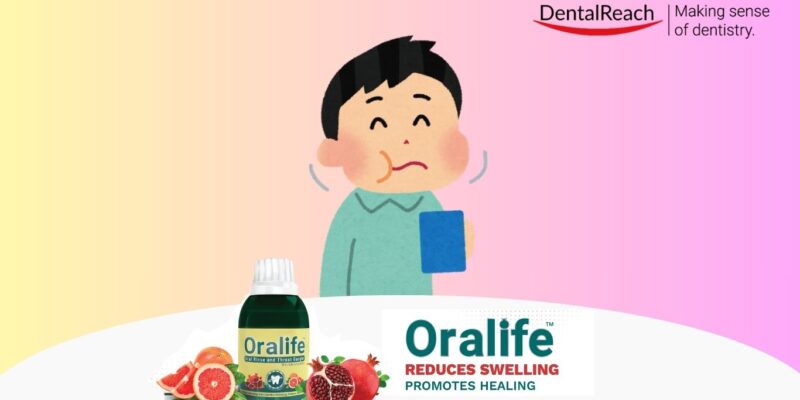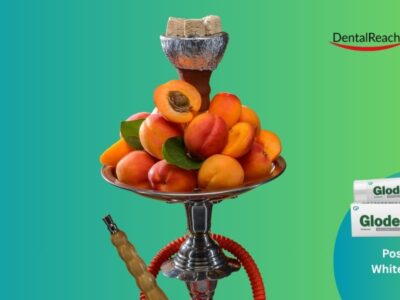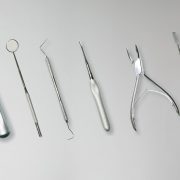The World Health Organization (WHO) defines oral health as the absence of conditions that impact the oral cavity, such as gum disease, tooth loss and decay, birth deformities such cleft lip and palate, cancer of the mouth and throat, oral ulcers, and persistent pain in the mouth and face. Dental caries is one of the most common forms of oral illnesses. Individuals with diabetes and heart issues had the greatest rates of periodontal disease compared to the overall population.
Since dental health is a fundamental and vital aspect of overall health, everyone views it as being of the highest significance. Significant technological advancements have been made in the dental and medical fields in recent years. Despite this, basic patient care practices still highlight the importance of simple behavioral modification and prevention strategies at a larger public health level. Alternative or traditional medical treatments like Ayurveda have recently started to gain popularity because of its natural nature, affordability, few side effects, and improved patient compliance.
Oil pulling, a traditional Ayurvedic treatment, was an ancient Indian method of preserving tooth health. Ayurveda uses a natural method with herbs and spices to find the root cause of any problem and cure it holistically. Ayurveda has been the go-to medical method for general health and wellness because people prefer natural remedies to chemical-based allopathic treatments. One method for maintaining tooth health could be oil pulling.
Oil pulling is said to support gingival health and bleeding by reducing inflammation, alleviating dry mouth, throat, and chapped lips, whitening teeth, reducing bad odor, and improving oral hygiene. It involves gargling through oil and allowing it to pass between your teeth. Oil pulling is best done in the morning on an empty stomach. It is recommended that adults spit out one tablespoon (10 mL) of sesame oil after swishing it between their teeth for 15 to 20 minutes. The thick oil thins and turns milky white when the recommended period of time has passed after sucking and tugging the oil sip in the mouth.
The term “oil pulling” is a traditional Ayurvedic treatment that entails using oil to cleanse the mouth. It is known as “Kavala Graha” or “Gandoosha Kriya” in the traditional “Charak Samhita and Sushruta Samhita.” Then, despite the fact that his assertions were unsubstantiated, Dr. F. Karach popularized this procedure by confirming that it could treat a number of oral illnesses.
It was claimed that oil-pulling therapy, an alternate method of plaque control, was superior than commercial mouthwashes that are readily available at home and had no unfavorable side effects. Furthermore, oil pulling has been shown to reduce plaque scores, alter gingival scores, alter the overall count of oral bacteria in gingivitis patients, and alter caries susceptibility from marked to minimal or moderate.
Mechanism Of Action
Although there are numerous options, the precise mechanism is unknown. One theory proposes a mechanism by which alkali hydrolyzes fat, resulting in saponification, also referred to as “soap making.” As the oils used for oil pulling contain fat, the alkali hydrolysis process emulsifies the fat into bicarbonate ions, which are normally found in saliva. Soaps and other effective cleaning agents combine with the oil to improve its surface area and, consequently, its cleaning ability.
Oil pulling is usually done using food oils such as sunflower, coconut, and sesame oil. Coconut oil is one edible oil that has a high saponification value. Hughes FJ and McNab RR found that coconut oil inhibits bacterial growth by 26 percent. The saponification process could be the reason of this. Moreover, saliva’s sodium hydroxide and coconut oil’s lauric acid mix to form sodium laurate, which has a cleansing effect and inhibits the formation of plaque. In the biofilm model made by oil pulling using several food oils, coconut oil shown a significant antibacterial activity against Candida albicans, Lactobacillus casei, and S. mutans in contrast to other edible oils.
Another theory holds that the oil’s viscosity stops plaque and germs from sticking to it.
Furthermore, the third theory states that the antioxidants in the oil purify the body by preventing lipid peroxidation, which works similarly to antibiotics. As a result, microorganisms are eliminated and vitamin E’s effects in the oral cavity are strengthened.
Oil Pulling Procedure
Swishing a teaspoon of oil around the mouth before breakfast and for around 20 minutes while the stomach is empty is known as “oil pulling.” One teaspoon of oil is used for children older than five. The oil is “pulled” and pushed between each tooth by swishing it around the mouth. The heavy oil will become thinner and milky white at the end of this activity if the procedure is done correctly. This is followed by spitting it out, cleaning the mouth thoroughly with either tap water or warm, clean saline water, and brushing or cleaning the teeth with the fingers. If the jaw hurts, the procedure can be finished in five to ten minutes. It’s not a good idea to spill oil into the sink since it could clog the pipes. It is better to spit the oil into a dustbin or into a paper towel.
Discussion
The mechanical action of swishing in oil pulling helps to emulsify the oil, which traps and removes microorganisms, debris, and toxins from the oral cavity. Several studies suggest that oil pulling can reduce Streptococcus mutans count, dental plaque, gingival inflammation, and halitosis due to its antimicrobial and anti-inflammatory properties. Coconut oil, in particular, contains lauric acid, known for its potent antibacterial action against oral pathogens.
Oil pulling should ideally be performed every morning on an empty stomach before to cleaning teeth in order to avoid oil from being consumed. When oil pulling, it is best to avoid swallowing the oil because it contains toxins and bacteria. The best way to pull oil is to sit with your chin up. It can be done three times a day on an empty stomach before meals to hasten the healing process. Due to the risk of aspiration, children younger than five should not use it. The practitioner should take care not to aspirate the oil when engaging in forceful oil pulling. When brushing is difficult or sometimes not advised, such as when there are mouth ulcers, fever, vomiting, asthma, or other ailments, oil pulling can be a helpful technique for maintaining oral hygiene.
This method is simple, cost-effective, and natural, making it an appealing adjunctive oral hygiene measure. However, despite its potential benefits, there are certain disadvantages and contraindications that must be considered.
Disadvantages
- Lack of strong scientific evidence to prove long-term efficacy compared to standard oral hygiene methods.
- Ineffective in removing calculus or cleaning interproximal and subgingival areas.
- May cause jaw fatigue or muscle soreness from prolonged swishing.
- Can lead to nausea or gagging in sensitive individuals.
- Time-consuming practice (10–20 minutes), reducing patient compliance.
- May create a false sense of oral cleanliness, leading to neglect of brushing and flossing. Spillage can stain clothes and improper disposal may clog drains.
Contraindications
- Children and individuals with swallowing difficulties due to risk of oil aspiration (lipid pneumonia).
- Patients with respiratory disorders such as asthma or COPD, who are prone to aspiration.
- Post-surgical or medically compromised patients, where oral exertion may affect recovery.
- Individuals allergic to specific oils (e.g., coconut, sesame) should avoid use.
- Should not be used in cases of severe oral infections or abscesses, which need professional treatment.
Conclusion
Oil pulling can serve as a natural, inexpensive adjunct to promote oral hygiene by reducing bacterial load, plaque, and halitosis. However, its limitations and potential risks must be acknowledged. Current evidence does not support oil pulling as a substitute for routine oral hygiene measures. It should complement—not replace—standard practices such as toothbrushing with fluoridated toothpaste, flossing, and regular professional dental check-ups to maintain optimal oral health.
References
- Comparative Evaluation of Antiplaque Efficacy of Coconut Oil Pulling and a Placebo, Among Dental College Students: A Randomized Controlled Trial- jithender nagilla1, SuhasKulkarni2, Padma Reddy Madupu, Dolar Doshi4, Srikanth Reddy Bandari, Adepu srilatha6
- Oil pulling and importance of traditional medicine in oral health maintenance- Mustafa Naseem1,Muhammad Faheem Khiyani2, Hiba Nauman3,Muhammad Sohail Zafar4,5, Altaf H Shah,Hesham S Khalil8
- Effectiveness of Oil Pulling for Improving Oral Health – A Meta-Analysis- Tzu-Rong Peng 1 , Han-Yu Cheng 1, Ta-WeiWu 1 and Boon-Kok Ng .
- Oral health and all‑cause,cardiovascular disease and respiratory mortality in older
people in the UK and USA-Eftychia Kotronia1*, Heather Brown1, A. Olia Papacosta2, Lucy T. Lennon- Robert J. Weyant3, Peter H. Whincup4, S. Goya Wannamethee2 & Sheena E. Ramsay1
- The Role of Coconut Oil in Treating Patients Affected by Plaque-Induced Gingivitis: A Pilot Study-Francesca Ripari1 Federica Filippone1 Giulia Zumbo1 Francesco Covello1 Francesca Zara Iole Vozza




















Comments